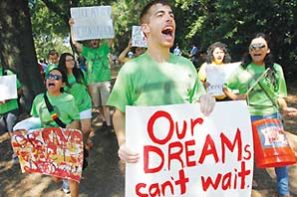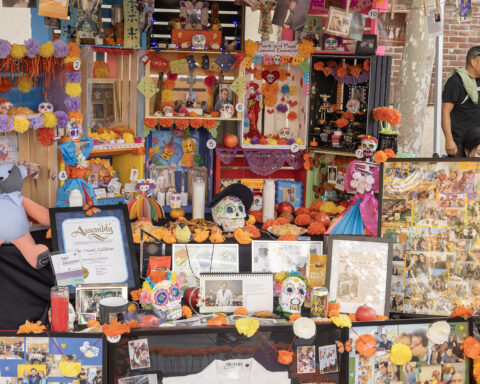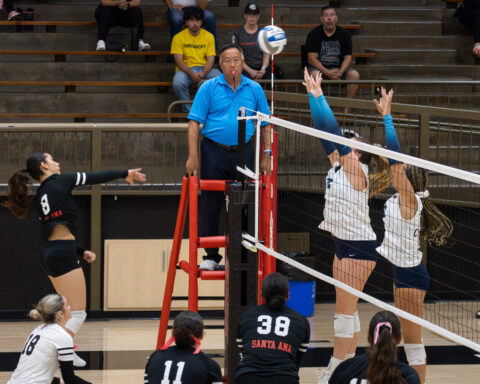LOCAL: Santa Ana community reacts to the signing of AB 131 by Gov. Jerry Brown.
Illegal immigrants are now eligible for state-funded aid and scholarships after Gov. Jerry Brown signed into law the second part of the Dream Act, making college more accessible to students who meet specific conditions.
“We finally get a fighting chance. We now may get some money,” Santa Ana college student Jorge Morales said.
Brown signed AB 130, sponsored by Assemblyman Gil Cedillo, D-Los Angeles, in July, allowing undocumented students access to private scholarships and loans.
“The Dream Act benefits us all by giving top students a chance to improve their lives and the lives of all of us,” Gov. Brown said.
Under the current law, those who have graduated from a California high school and have proved that they are on the path to legalizing their status are eligible to pay resident tuition rates.
The new law allows them to apply for financial aid from state universities but only after legal residents have already applied.
“It is a significant development that will help strengthen the economic future of the state of California,” said SAC Vice President of Student Services Sarah Lundquist.
But some legal residents and taxpayers are worried about expanding higher education while California faces an enormous budget deficit that has led to drastic cuts in education funding.
“There’s a multitude of legal students that need assistance. I understand they want to be part of society, but I’m struggling as well, and paying taxes,” said Santa Ana College student Mark Alexander.
With an increasing state debt load, spending on higher education has been drastically scaled back, raising the cost of tuition to thousands of dollars at some state universities, beyond the capacity of the majority of legal students’ ability to cover. Community college expenses alone have risen from $20 per unit to $36 in a span of two years.
The Dream Act could potentially cost about $20 to $40 million.
Money will come from publicly funded programs that provide for low-income students.
“We have today thousands of high-achieving academic talented students that have one goal, a goal that we wish they have which is to graduate, get a job and pay even more taxes than they pay today and contribute to the long term well being of the community they live in and the economy,” Lundquist said.
Most of the students eligible for the new law, like Ramses Munoz, were brought to the country as children by their parents.
“We’re not criminals,” Munoz said. “We’re students.”
The California Dream Act isn’t the first legislation designed to help undocumented students.
- AB 540, which allows undocumented students to qualify for in-state tuition, was signed by Gov. Davis in 2001.
- AB 130, which takes effect Jan. 1 2012, allows private scholarships to be awarded to undocumented students.
- AB 131 guarantees Cal-Grant aid to undocumented students who qualify and are in good academic standing.
RELATED STORIES:
State’s ‘shenanigans’ burden RSCCD budget
Fee increases forcing students to the edge
UC cut hurting students
Gov. Jerry Brown and the Dream Act
- In Photos: Fiestas Patrias 2025 - September 25, 2025
- The two-party system is failing us. - October 19, 2024
- Read our Fall 2023 Print: Vol. 100 No. 1 - October 23, 2023











